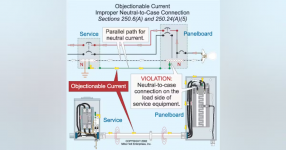I usually see all service switch neutrals grounded to the ground bus in the room. Ground bus is bonded to ground rods with building steal, water main, etc.
Are you allowed to bond ground and neutral at the service end box instead of service switches? Not sure if this is ok in NYC
If you bond the neutral and ground at the service end box, does this mean you don't have to bond ground and neutral at the service switches?
Are you allowed to bond ground and neutral at the service end box instead of service switches? Not sure if this is ok in NYC
If you bond the neutral and ground at the service end box, does this mean you don't have to bond ground and neutral at the service switches?


